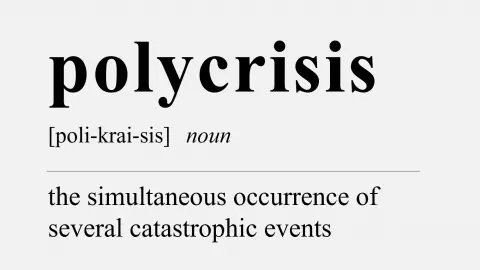Rates: Something’s got to give
The very system is threatened by the necessity of central banks to raise rates to the extent that both sides of - weaker - bank balance sheets are under pressure. Given all that, along with a threat to the quality of the US Treasury market, and there are reasons to worry. It's all pulling market rates in different directions. Something will give
The crisis in (small US) banks is a factor placing downward pressure on market rates
Typically, you would expect concern about the banks to have a dominant influence on market rates, pushing them lower. There certainly was an impact influence when Silicon Valley Bank in the US went down, followed by Credit Suisse in Europe. We had what looked like a simultaneous realisation that higher official rates were having a negative effect on the financial system that should cause central banks to tame their hiking ambitions.
Since then, market rates have been up and down, but all in all, iterating around a broadly flat trend. Even though the US banking story has been further muddied as a solution had to be found for First Republic Bank, and some other smaller banks have come under pressure, there is also the realisation that the American systemically important ones are fine, and European banks are not being overly impacted by the stresses in the smaller US banks.
This has prevented market rates from further nosediving, and indeed both the European Central Bank and the Federal Reserve have delivered interest rate hikes in the meantime.
Sticky inflation acts to question lower rates, and places upward pressure on market rates
Market rates remain on watch, and observing other key factors. One of those is inflation.
This, of course, is not a new story, but the big issue in play now is how sticky inflation has become. It’s off the highs but running out of easy runway coming from base effects. Further falls will be tougher, keeping both the Fed and the ECB in hawkish territory. Market rates are impacted too, as ambition for longer market rates to fall in any material fashion is frustrated by the reality that they are still deeply negative in real terms, and also well below short tenor rates.
Longs in front-end US, for example, provide a running yield with a 5% handle on very little price risk, whereas the 10yr at 3.5% is more than 1.5% below this and subject to considerably more price risk. The inversion on the eurozone curve is not as pronounced, but the same logic applies. Euribor 6mth at 3.5% contrasts with the 10yr at 3%.
The size of negative real yields is also far more pronounced in the eurozone. Such negative real yields result in less relative value in bonds (yields eaten up by much higher inflation) and are also acting as a stimulus to the economy. The offset is this places upward pressure on long market rates.
An important offset here comes from inflation expectations as discounted from market breakevens - these are in fact subdued; close to 2% for the US for example.
The US debt ceiling issue could swing in both directions
Then back in the US, there is the debt ceiling saga to be concerned with. This is a global story: if we get to the point where the US Treasury misses just one interest payment on its debt, there is a domino effect that could take down the entire global financial system.
For that reason, such a breach is unlikely to happen. But it still could.
The impact of this on market rates is nuanced. The build-up likely causes Treasury yields to fall (with the exception of securities and bills that are due during the X-date range of June to August). In fact, the S&P downgrade of 2011 coincided with “flight to safety” falls in Treasury yields as risk assets took a hit, and in the background, the eurozone was going through its own crisis.
But this time, the stakes look to be a bit higher, with a higher associated risk for a mistake. That is more likely to cause players to exit Treasuries (to avoid being left long a defaulted security and the headache that it brings), placing net upward pressure on market rates. In the extreme – a missed payment/default – that exit could be swift, manifesting in sharp rises in Treasury yields. Moreso the front end than the back end, but still a higher US market rates theme.
The push and pull here is immense, and extreme outcomes are possible.
The very system is being threatened by the necessity of central banks to raise rates to the extent that both sides of (weaker) bank balance sheets have come under pressure. Overlay that with a threat to the quality of the US Treasury market, and there are big reasons to worry. The thing is, these are pulling market rates in different directions.
Something will have to give. We think we’ll ultimately end up with lower rates (and no default), but the path to there is prone to extreme moves in either direction. And if there is a default (still unlikely), US market rates shoot higher instead (especially on the front end), while non-US core rates can shoot lower.
Download
Download article
12 May 2023
ING Monthly: We’re in a polycrisis – and this is what it means This bundle contains 16 articlesThis publication has been prepared by ING solely for information purposes irrespective of a particular user's means, financial situation or investment objectives. The information does not constitute investment recommendation, and nor is it investment, legal or tax advice or an offer or solicitation to purchase or sell any financial instrument. Read more
